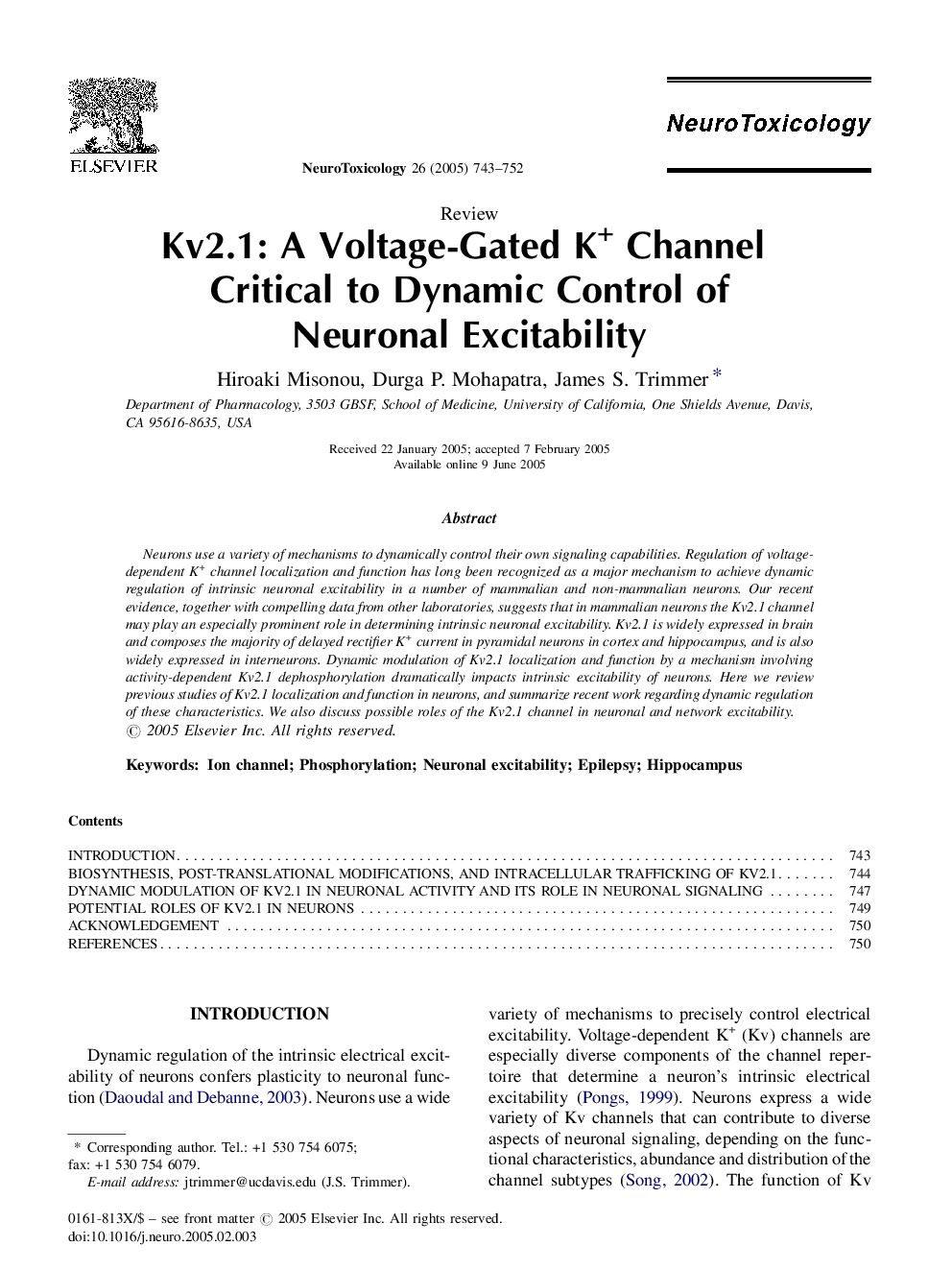| Article ID | Journal | Published Year | Pages | File Type |
|---|---|---|---|---|
| 9032198 | NeuroToxicology | 2005 | 10 Pages |
Abstract
Neurons use a variety of mechanisms to dynamically control their own signaling capabilities. Regulation of voltage-dependent K+ channel localization and function has long been recognized as a major mechanism to achieve dynamic regulation of intrinsic neuronal excitability in a number of mammalian and non-mammalian neurons. Our recent evidence, together with compelling data from other laboratories, suggests that in mammalian neurons the Kv2.1 channel may play an especially prominent role in determining intrinsic neuronal excitability. Kv2.1 is widely expressed in brain and composes the majority of delayed rectifier K+ current in pyramidal neurons in cortex and hippocampus, and is also widely expressed in interneurons. Dynamic modulation of Kv2.1 localization and function by a mechanism involving activity-dependent Kv2.1 dephosphorylation dramatically impacts intrinsic excitability of neurons. Here we review previous studies of Kv2.1 localization and function in neurons, and summarize recent work regarding dynamic regulation of these characteristics. We also discuss possible roles of the Kv2.1 channel in neuronal and network excitability.
Related Topics
Life Sciences
Environmental Science
Health, Toxicology and Mutagenesis
Authors
Hiroaki Misonou, Durga P. Mohapatra, James S. Trimmer,
